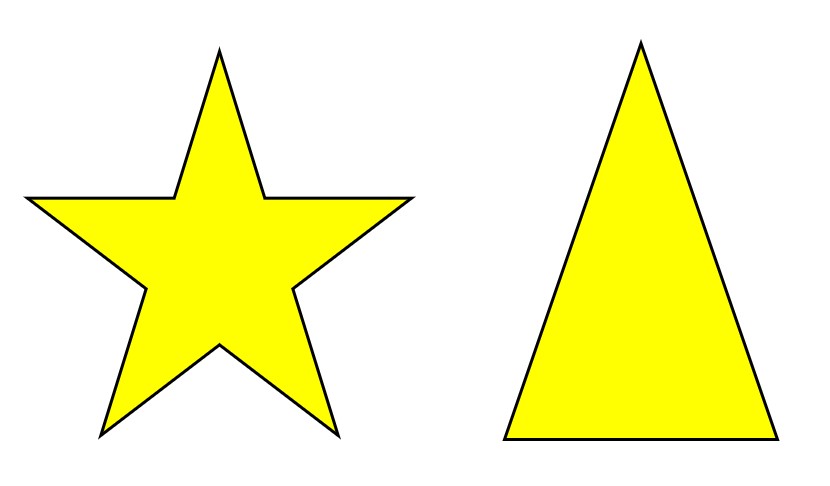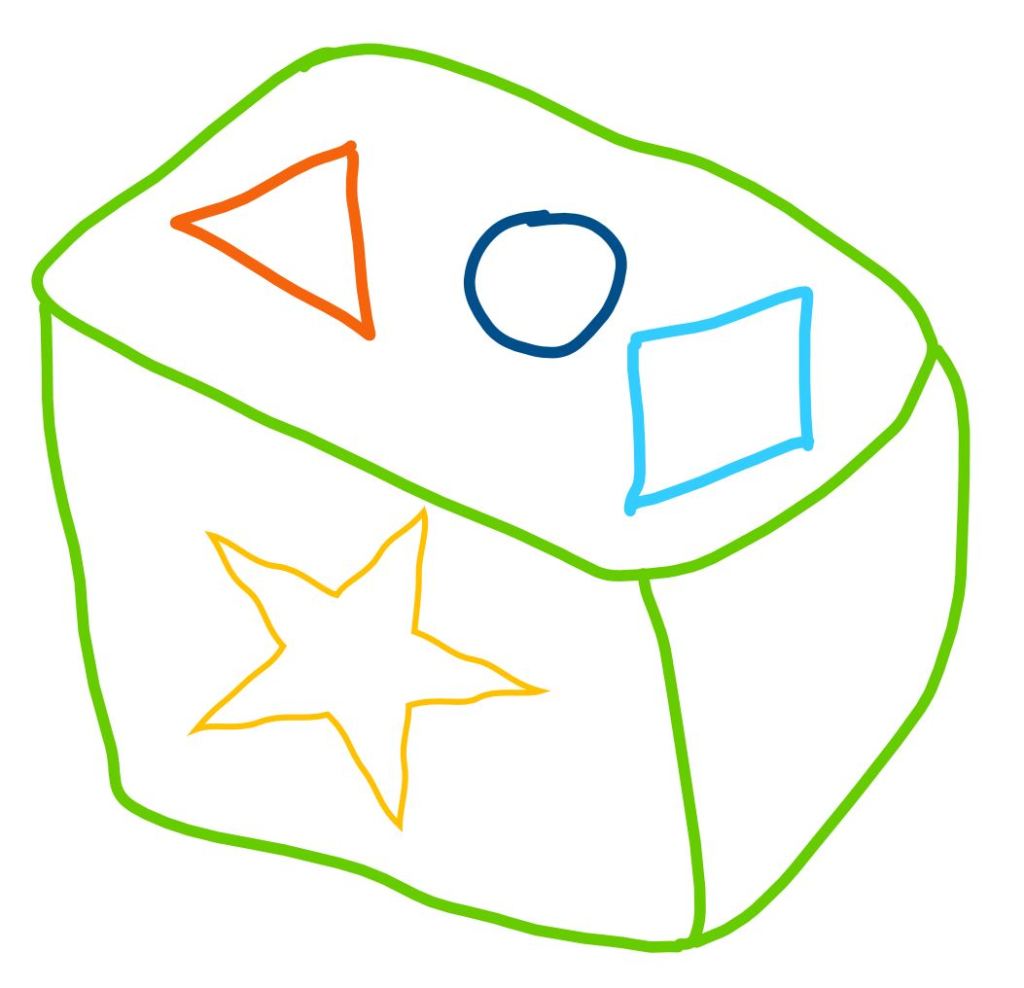Introduction to Chapter 3
Sets and Logic; Elementary Education Theme: Organizing by Rules or Attributes

Introduction
At as early as 15 to 18 months old, babies have the hand-eye coordination and problem-solving abilities that enable them to sort and match objects. Babies can use shape sorters (see below) to push the right shape through the right hole, they can stack bowls from small to large, and delight in pouring water or other objects from one container to another. Later, in pre-kindergarten and kindergarten, children can engage in sorting and matching, using attributes such as shape, color and size to identify similar objects. These basic sorting activities are the foundation of counting, addition and subtraction, and of finding patterns, since pattern recognition involves seeing what is similar and what is different. As teachers, we want to encourage children to use their innate logical thinking skills to sort and to have fun sorting as their minds develop.
Set Theory is a branch of mathematics that uses sets as its foundation. Set theory can be seen as the foundation for all of mathematics, since numbers can be thought of as sets of objects. For example, a set with one object in it, {A}, is analogous to the number 1, a set with two objects, for example, {A,B} is analogous to the number 2, and so on.
Find My Match
A great game to encourage children in sorting by attributes is Find My Match (from Big Ideas of Early Mathematics, the Early Math Collaborative, 2014). A child can be given a shape and set of objects and asked to find the match within that set:
For example, we might ask a child to find the match for

In this set of shapes:

This is a simple example good for young children, since there are only a few attributes: three colors (blue, purple and yellow) and two shapes (star and square). The game can be made more complicated with more attributes added – for example, shape, color and size.
A shape sorter is a way for a toddler to play find my match. It’s basically a box (made of cardboard, wood, or other materials), and the correct shape has to be pushed through the correct hole. Shape sorters can be homemade (see this video or this one for how) or store bought.
Sorting by Attributes
Another important early concept is that many different sets can be created using the same objects, depending on what attribute is used to group them. This type of sorting into sets is a more advanced process for children than just matching or sorting one shape, since children have to focus on one attribute while ignoring the others.
Think about how you could create at least three different sets using the objects below

Notice that the sets you create can overlap each other, depending on what characteristics you have chosen.
Guess My Rule
Guess My Rule is another game that can be played with colors and shapes, using both sorting and matching skills. To play the game, place one shape on the board, then a second shape. Students must come up with a third shape that fits your secret rule, then a fourth shape, and so on, without saying the rule out loud. For example, we might start with:

With only two shapes given, there are many possibilities for what the rule is. Maybe the secret rule is “pointy shapes,” maybe it is “yellow shapes,” or maybe it’s a pattern, “star, triangle, star, triangle.” It is only when the next few objects are correctly guessed that it becomes clear that the second rule is the correct one.

Students can be challenged to create their own “Guess my Rule” for other students to guess. In the project for this unit, you will create three sets of rules for another student, using numbers rather than shapes.
Guess my Rule can be played at many levels, all the way to calculus. See http://thinkmath.edc.org/resource/guess-my-rule. When we place a number sequence on the board such as 1, 1, 2 and ask you to guess the next number without saying the rule, that is a version of “Guess my Rule.”
The Game of Set
Finally, another attribute game is SET, http://www.setgame.com/set/puzzle, which involves shape, shading, number and color, and can be played at many levels of difficulty.
In SET, players must find three cards that either all have the same characteristic, or have three different characteristics. The three cards above make a “set” because they are three different numbers, three different shapes, three different colors, and three different types of fill (striped, solid and empty). The three cards below also make a “set” because they have the same number and otherwise have all three different characteristics.
To make a “set” in the game of set
- All three cards must be the same in an attribute or
- All three cards must be different in an attribute, or
- Some combination of the two rules, above.


Important note for all these games: when you play these games in your classroom, you may wish to leave out the colors red and green, since children who are color blind often cannot distinguish between them.
